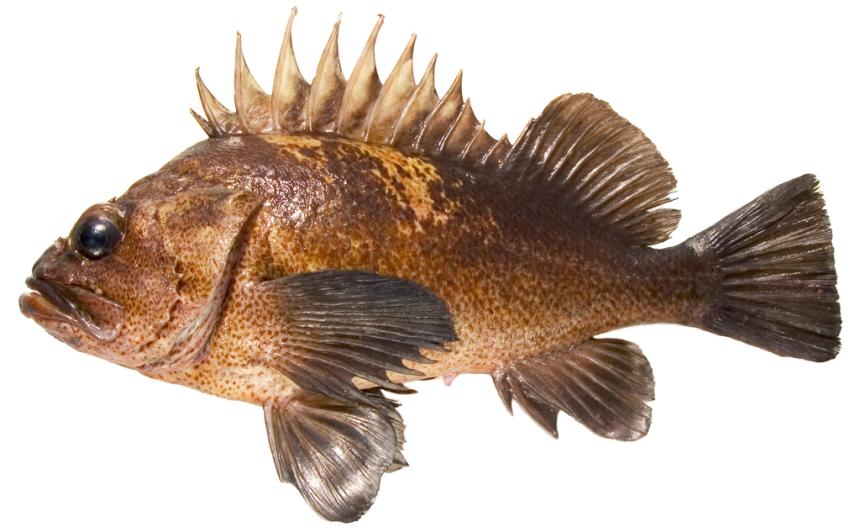Moderate-
High
Description and Range
Physical description
Quillback Rockfish are brown to black on the body with yellow to white mottling and blotches which emanate from the dorsal side of the fish and extend downwards. These blotches and mottling typically end by the midsection of the fish which often darkens progressively towards the tail.
The dorsal fin and spines are a distinctive feature of this fish. The spines are deeply incised and are white or light yellow but can have dark brown or black saddles on them. Quillbacks in some areas have brown or orange freckling on the head which extends from the dorsal side to below the pectoral fins. It is interesting to note that this does not seem to be common in individuals living in Puget Sound.
Quillbacks are similar in appearance to both Brown and Copper Rockfish. The clearest way that Quillbacks differ from Browns is that they lack the characteristic brown spot on the gill cover that the Brown Rockfish has. The main difference between Quillbacks and Copper Rockfish is that the Copper’s clear lateral line band and radiating bars around the eyes are absent from Quillbacks.
Identification of these three species can be made more difficult by the evidence that they hybridize in Puget Sound. For example, a hybrid of a Quillback and a Copper could have the yellow blotches and body color of a Quillback but have a clear band on the lateral line like a Copper.
Quillback Rockfish can grow up to 63.6 cm (25 in) in length, 3.3 kg (7.2 lb) in weight, and live for up to at least 95 years.
Geographic range
Quillbacks are found from Kodiak Island AK to southern California at depths from the intertidal zone to 274 m (899 ft).
Like many rockfish species, they prefer high relief rocky habitat; however, Quillbacks can also be found on the mud/sand bottoms that occur near rock outcrops or at the base of drop-offs.
Studies have shown that at least in Puget Sound, these fish don’t move very far when they are on a patch of rock but can be more mobile when there is less rock available. Fish in these studies were shown to stay within about a 10 m2 home range. Quillbacks have also been transported outside of their home range and were found to return to that same location, demonstrating site fidelity.
Climate vulnerability
Sensitivity to climate change
Moderate
The main sensitivity of quillback rockfish to climate change is likely to stem from changes to their prey base. Warmer ocean conditions could lead to decreases in prey (e.g., copepods for juveniles, larger crustaceans, small fish, and cephalopods for adults) for both juveniles and adults, prompting decreases in adult fecundity and juvenile survival. Additionally, nearshore habitat loss due to sea level rise could impact juvenile survival, as juveniles tend to use nearshore habitat as nursery and foraging area. Deepwater coral habitat, which many adult rockfish use, may also decrease due to acidification, further reducing available habitat. Decreased oxygen levels may have direct physiological effects on quillback rockfish, leading to higher levels of mortality across various life stages. Due to their long life cycles and generation times, adults may be able to persist through short term pulses of negative ocean conditions (e.g., years with warmer sea surface temperature), though conversely, their low productivity could make it difficult for populations to recover from climate-related declines.
Exposure to climate change
Moderate-
High
- Increased ocean temperatures
- Sea level rise
- Declines in pH
- Decreased oxygen
Regulations
Rules and seasons
Recreational harvest within Puget Sound has been closed.
State record
- Weight
- 7.19 lbs
- Angler
- Bror Hultgren
- Location
- Middle Bank, San Juan County
- Date Caught
- October 29, 1987
